Modern Healthcare Technology Blog

Unleashing Innovation: Exploring Out-Of-The-Box Strategies for 340B Savings
In this white paper, 340B industry expert, Jason Prokopik of Blue & Co., provides a comprehensive exploration of the complexities inherent in the 340B program, as well as inventive tips and tricks to help you navigate the world of 340B with confidence. You’ll be equipped with invaluable tools to unlock innovative pathways that will unlock new potential for your 340B operations in an ever-changing industry landscape.
340B Program Overview
The 340B program, established under Section 340B of the Public Health Service Act, is a critical federal initiative designed to stretch scarce resources and improve access to essential medications for vulnerable and underserved populations. It enables eligible healthcare entities, including safety-net hospitals, community health centers, and other qualifying facilities, to purchase outpatient drugs at significantly reduced prices. This results in substantial cost savings, which can then be reinvested in a variety of ways, such as expanding patient services, enhancing the quality of care, or even bolstering community outreach efforts.
At its core, the program's mission is to ensure that individuals with limited access to healthcare services, including the uninsured and underinsured, have affordable and equitable access to healthcare. As we delve deeper into this white paper, we will uncover the intricacies of the 340B program, revealing the myriad benefits and strategies that can be harnessed to optimize its potential and promote better outcomes for all.
Mixed Use Settings
One striking aspect of the 340B program is the diversity of hospitals it encompasses. Depending on your hospital type, specific factors can influence your approach to maximizing 340B benefits. Whether you're a GPO prohibition hospital or not, and whether you're involved in Medicaid or not, these variables can significantly impact your strategy.
Medicaid Matters
Medicaid, with its varying billing processes, plays a crucial role in the 340B landscape. When considering Medicaid patients, hospitals have a choice between billing at usual and customary pricing or actual acquisition costs, as required by some states. Furthermore, managed Medicaid introduces a complex layer of uncertainty. While some states allow managed Medicaid processing, others impose restrictions. It's vital to understand the intricacies of Medicaid in your state.
Medicare and Medicaid Modifiers
In the past, Medicare modifiers were in play until the Supreme Court stepped in, to eliminate the reduction in Medicare reimbursement for some hospital types. Hospitals should keep their eye on Medicare reimbursement changes going forward.
For entities that carve in Medicaid, it is important to understand whether the state uses the Medicaid Exclusion File or individual modifiers to prevent duplicate discounts to maintain compliance.
Challenges in Clinic-Administered Drugs
Some challenges may arise in the context of clinic-administered drugs, particularly in Federally Qualified Health Centers (FQHCs). These include determining whether it's worth buying drugs at 340B pricing in such settings, understanding the intricacies of managed Medicaid requirements, and managing inventory.
Savings Strategies
In the diverse 340B landscape, certain strategies can help organizations optimize savings and profitability. The following approaches hold promise:
- Referrals: Referral processes are crucial in the contract pharmacy model. Some Third-Party Administrators (TPAs) offer a referral solution and can help you streamline the referral process.
- Medication Management Utilization: Evaluate the flow of medications, particularly e-prescriptions, to ensure you are optimizing your contract pharmacy portfolio.
- Specialty Pharmacy Considerations: Identify where specialty prescriptions are filled and explore creative pricing strategies, such as reverse distributions. It’s also important to speak with your TPA to about how you can optimize benefits.
- Understanding and Evaluating Fees: In-depth knowledge of fees, including gateway fees and the cost of accessing specific contract pharmacies, can lead to cost savings.
- Third-Party Administrator Fee Models: Most third-party administrators offer various fee models, such as switch fee models, fees per claim, flat fees, or percentage-based models. The choice of fee model can impact your overall costs and potential savings.
Additional Savings Opportunities
Delving deeper into the landscape of optimizing 340B program benefits, there are a few additional creative alternatives that can enhance your program’s success. These opportunities not only expand your ability to capture savings but also have the potential to revolutionize patient care and loyalty. These two compelling avenues include:
- Medication Therapy Management Programs: A unique alternative to prescription referral capture involves the use of clinical pharmacists or nurse practitioners within eligible clinic locations. This approach expands the patient definition and captures specialist prescriptions by utilizing eligible encounters with staff who work directly for the hospital. While it may not be a one-size-fits-all solution, this innovative approach can lead to significant savings.
- Entity-Owned Pharmacies: For covered entities without retail pharmacies, the establishment of entity-owned pharmacies offers tremendous potential. Beyond financial benefits, entity-owned pharmacies can deliver enhanced patient care, greater patient loyalty, and the ability to directly impact pricing, passing on savings to patients.
The Crucial Role of IT
Data feeds and encounter files are integral to the success of your 340B program. It’s essential to ensure the right data is delivered to the right place. Hospitals must also account for all departments and patient types in outpatient settings. That’s why active participation from your IT team in compliance committee meetings is critical, as they play a central role in the transmission of your data transmission.
Clean Sites and Savings
Clean sites represent a promising opportunity, particularly for infusion centers or oncology clinics. By operating as if every patient is an outpatient and therefore purchasing at 340B pricing, hospitals can achieve significant savings. Although compliance challenges remain, a well-executed clean site strategy can lead to substantial cost reductions.
The Future of 340B
The future of the 340B program is a complex and evolving landscape, raising essential questions about its direction and impact. As we look back at the last three years, we find ourselves grappling with several key questions that are central to understanding the program's trajectory:
- Protection of PHI: A significant concern revolves around the protection of Patient Health Information (PHI) in the program. Given the increasingly digital nature of healthcare data, safeguarding PHI is paramount.
- Use of ESP and Manufacturer Data: There's a growing curiosity about how manufacturers and the ESP portal are handling the data submitted by covered entities. Transparency and data security have been critical issues in the program's development.
- Future Reimbursement Models: One of the most pressing questions pertains to future reimbursement models. Will there be changes in reimbursement and could covered entities receive less reimbursement at the hospital and pharmacy level? The answers to these questions remain uncertain.
- Manufacturer Restrictions: Several drug companies have opted to move towards a one designated contract pharmacy option, irrespective of whether covered entities provide their data or not. This move indicates that the value initially placed on data might not have been as substantial as anticipated.
Recent developments reinforce the importance of utilizing the ESP portal. Even if you're still submitting data, the value of that data may have changed over time.
Conclusion
Navigating the evolving 340B landscape involves complex decision-making and creative problem-solving. The program, while challenging, offers opportunities to optimize savings, enhance patient care, and solidify financial sustainability. It requires adaptability, and although there is no one-size-fits-all solution, covered entities can explore these avenues to secure the future of 340, and ultimately affordable, high-quality care to patients.
Jason Prokopik, Pharm.D., 340B ACE
Sr. Manager and Pharmacy Consultant
Blue & Co., LLC
Follow Cervey on socials to stay tuned for upcoming webinar announcements:
Contact Cervey for a demo of our 340B suite of web-based products that help 340B-eligible healthcare providers with their of their most pressing 340B needs: maximizing savings, ensuring compliance, and optimizing the performance of their contract pharmacies.


